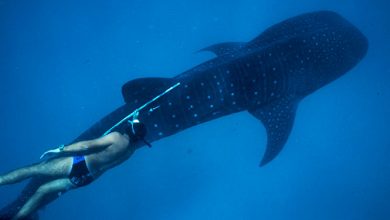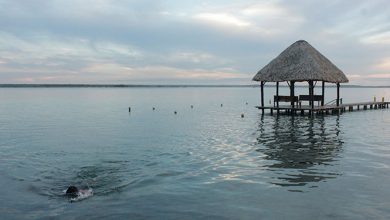Satellite Communication with Sea Turtles
Veterinarian Ana Negrete is head of the Xcaret Sea Turtle Conservation Program, focused on rehabilitating, releasing and tracking sea turtles in an effort to protect them from extinction

 On June 15, three sea turtles that were recovering from serious injuries in the rehabilitation center at Xcaret, finally regained their freedom. The turtles had suffered skull fractures, dehydration, wounds, vision loss, and loss of consciousness. They were treated with limited human interaction. The turtles have a GPS tracking device glued to the shell, there is no harm done to them, and the device will eventually fall off as the turtles shed their scutes.
On June 15, three sea turtles that were recovering from serious injuries in the rehabilitation center at Xcaret, finally regained their freedom. The turtles had suffered skull fractures, dehydration, wounds, vision loss, and loss of consciousness. They were treated with limited human interaction. The turtles have a GPS tracking device glued to the shell, there is no harm done to them, and the device will eventually fall off as the turtles shed their scutes.
Dr. Negrete explained that it is imperative turtles remain afraid of people for their safety. The research will analyze swim patterns, vulnerabilities, and exhibit how they thrive after rehabilitation. The study will also provide information to protect them in the event of oil spills or a natural disaster. One female olive ridley turtle surprised the staff at Xcaret hospital when she was rescued in Caribbean waters. Her species is from the Pacific Ocean, so her life journey is a mystery. Turtles always return to where they originated from to nest, and tracking her journey will provide beneficial information about the turtle’s life and migration patterns. The latest signal pinpoints her in Florida.
 One of the hawksbill males has decided to stay in the Yucatan channel for now, and the other male has not checked in. When the animal surfaces for air, a GPS signal is recorded, but while the transmitter is underwater, the unit turns off so as not to waste the battery. The hawksbill is not active. It is a peaceful animal, so its battery will last approximately one year, whereas the olive is active and surfaces more often. Her battery will die in 3-4 months. The injuries most common in sea turtles are caused by propellers, fishnets, ingested plastic, poachers, attacks from other animals and dehydration.
One of the hawksbill males has decided to stay in the Yucatan channel for now, and the other male has not checked in. When the animal surfaces for air, a GPS signal is recorded, but while the transmitter is underwater, the unit turns off so as not to waste the battery. The hawksbill is not active. It is a peaceful animal, so its battery will last approximately one year, whereas the olive is active and surfaces more often. Her battery will die in 3-4 months. The injuries most common in sea turtles are caused by propellers, fishnets, ingested plastic, poachers, attacks from other animals and dehydration.
An interesting fact is that Dr. Negrete includes honey as an important remedy on the turtles, using it is a natural antiseptic.







